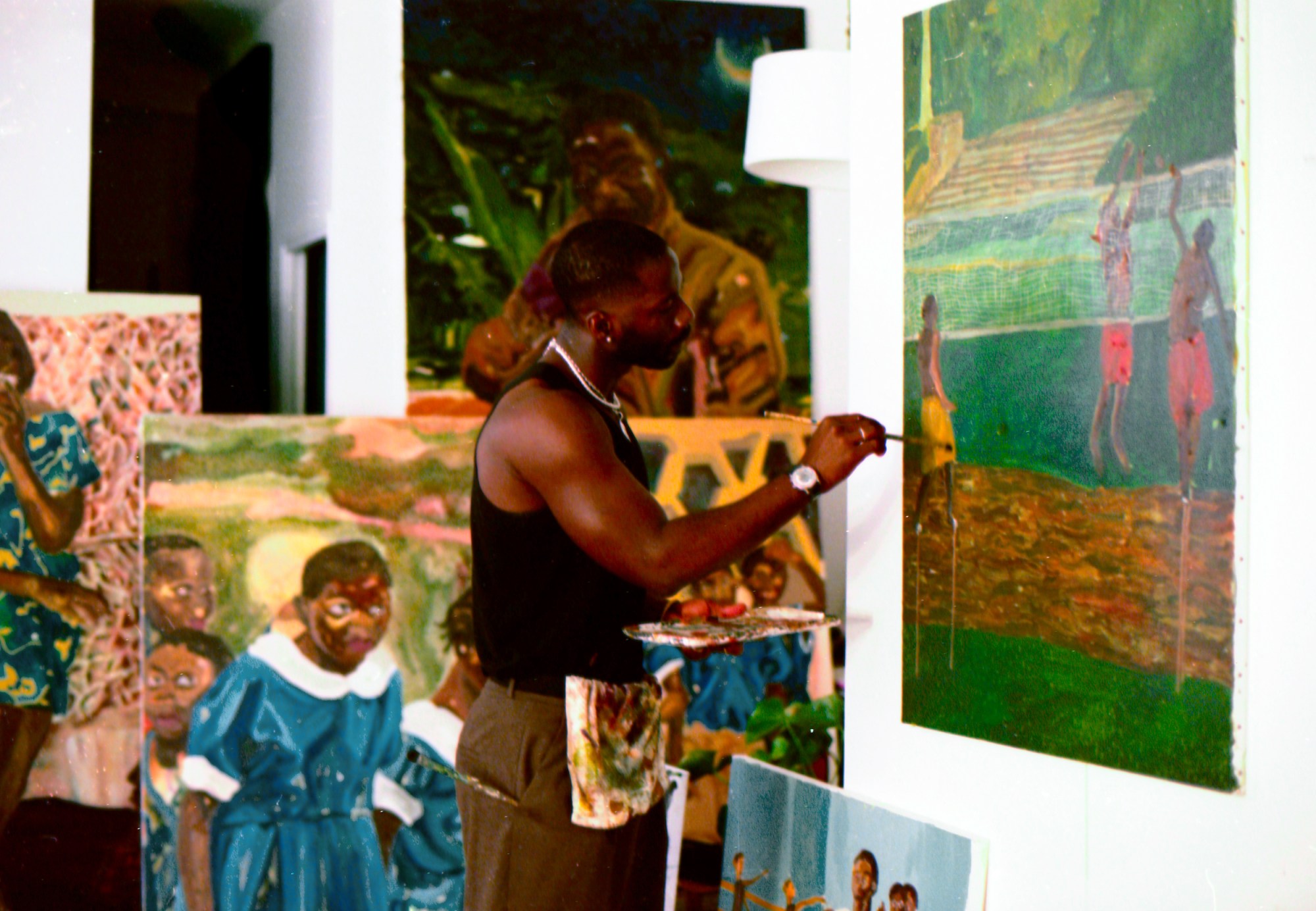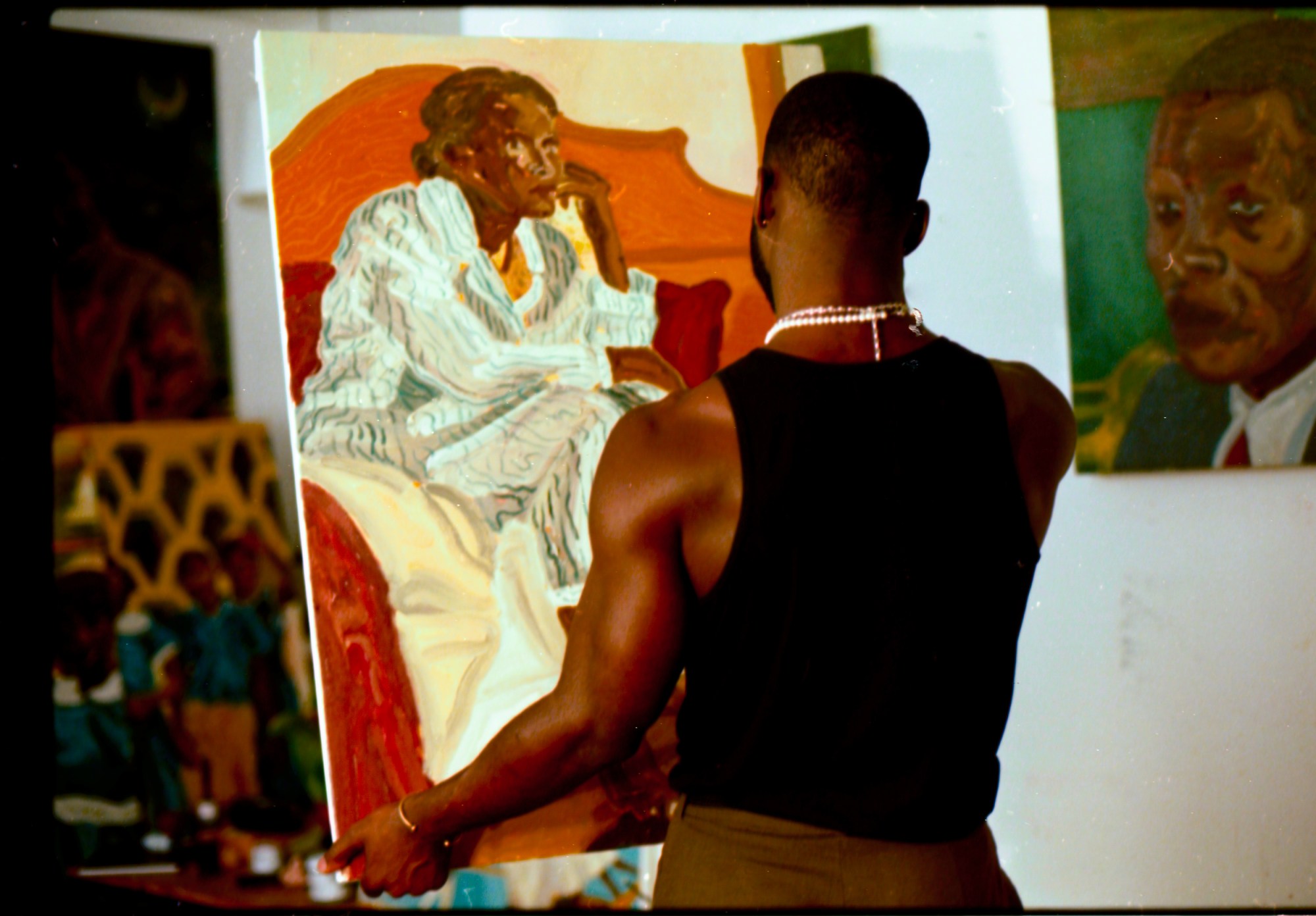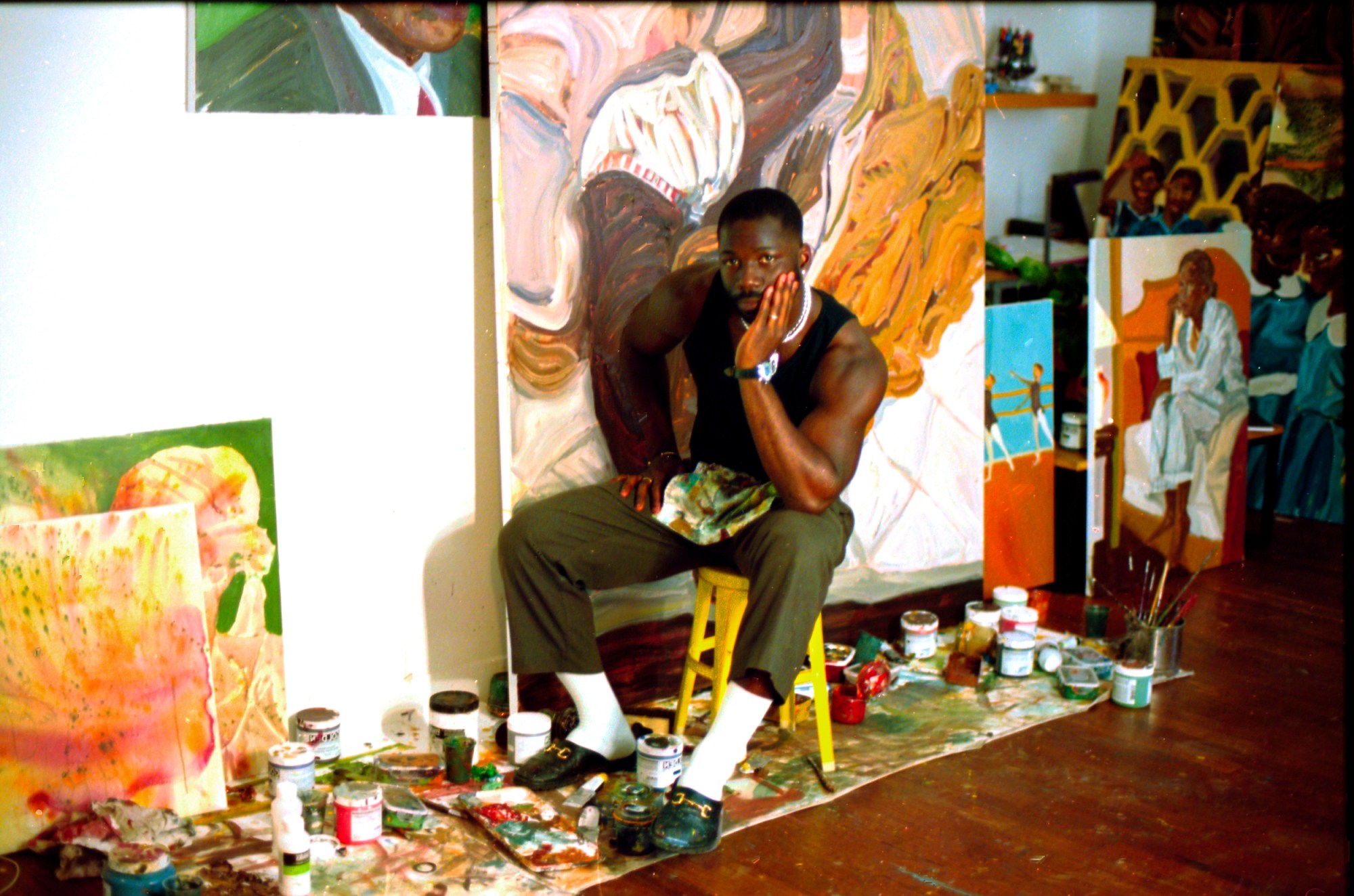Last year, Ludovic Nkoth left the maelstrom of New York for the easy insouciance of Paris. He moved first to the historic Montmartre district before relocating to a light-filled live-work space in the 19th arrondissement. It’s here that he has spent the past few months painting dense impastos in a saturnine palette of deep browns, blues and greens. Like much of his work, the paintings are inspired by Ludovic’s Cameroonian upbringing. But his new pieces come to terms with the concept of home like never before.
We meet at his studio on a warm morning in September. Neat stacks of books by Caleb Azumah Nelson, Clarice Lispector and Kevin Quashie line a large dining table, where Nkoth pours himself a cup of herbal tea. “Running” – a fuzzy guitar number by the Zambian band Blackfoot – soundtracks our introduction. Throughout the interview, Nkoth’s playlist oscillates between Afro and US jazz, with the vocals of Miriam Makeba, Duke Ellington and John Coltrane filling the space at various points. “Within my work has always been the idea of home and mobility,” says the 29-year-old, who moved from Cameroon to the US aged 13. “I’ve always been curious about how one can leave the space of home and recreate that same feeling or space in a different place, in a country that hasn’t always necessarily been kind to those specific people.”

Ludovic completed an MFA at Hunter College New York and graduated in 2021. Since then, his lush acrylic paintings, which depict Black figures in various quotidian milieus, have chimed with the art world and celebrities alike. After leaving Hunter, Kehinde Wiley hand-picked Ludovic to take part in a group show, Self Addressed, which featured self-portraits by 30 contemporary African artists. He has since hosted solo exhibitions in LA, Turin, London and Shanghai, while Naomi Campbell is a regular in his comments section. This October, Ludovic’s career trajectory is set to crescendo with two concurrent solo shows. The first, at François Ghebaly Gallery in LA, juxtaposes themes of presence and impermanence. Inspired by Lispector’s novel Água Viva, he lauds the ability to stay rooted in any given moment. In subtle contrast, he draws on conversations with Cameroonians living in the Chateau Rouge region of Paris to grapple with subjects of immigration and transience.
The second exhibition, at Maison La Roche in Paris, is the culmination of a year-long residency with the Academie des Beaux-Arts and Cité Internationale. “The house was built around 1925 and was inhabited by a Swiss banker who lived with his art collection,” Ludovic says of Maison La Roche, which was famously designed by the architect Le Corbusier and his cousin, Pierre Jeanneret. “I started thinking, ok, people of colour weren’t occupying spaces like this at that time, at least to my knowledge. What would it feel like for the space to be inhabited by people of colour? I want [the exhibition] to feel like you’re walking into a family’s home.”
The result is a series of paintings that would feel as apt in a family photo album as they would on the walls of a gallery. The pieces for the show are yet to be finalised when I visit, but Ludovic guides me through his works in progress; effervescent scenes of children in swimming pools, at ballet classes and playing volleyball on the beach. Elsewhere, his adult subjects are in repose, perched on the edge of a bed or sinking deep into a chaise longue; “we love to see Black leisure” he quips. The paintings are a departure from Ludovic’s previous work, in which subjects appeared ill-at-ease, even when reclining on couches or idling in a meadow of flowers. Movement and instability have underscored his practise until now, but today there is harmony in the colour mixing while the intense, swirling brushstrokes which envelop his canvases have softened. The shift has come as a result of changing conceptions of Blackness and home, Ludovic tells me, adding that books like The Sovereignty of Quiet by Quashie have helped him to embrace rest in his art.

“[Quashie] starts by saying that when we think of Blackness, we think of outside emotions like being loud, or we think of being oppressed. He wants to reframe the way we look at Blackness, he asks what it feels like for the Black figure to be quiet, to be in touch with the interior, to be whole and to exist outside of this notion of colonisation and Black struggle.”
Moving to Paris also prompted an about-face for Ludovic, which is reflected in his LA and Paris shows alike. “I’ve travelled so much – willingly and unwillingly – in search of home. When I go to Cameroon, I’m seen as a tourist because I don’t speak French like they do anymore […] in the United States, because I have an accent, I’m looked at as other again. Coming here, I had to figure out what home meant for myself. I am coming to the conclusion that it is not where you’re from, or where you live, or where your parents live. Home for me exists as a concept. Home is something you carry with you, home doesn’t ever stay in one space.”
Ludovic will be revealing the details of a high-profile collaboration in the coming months and is poised to appear at a number of art fairs in 2024. Until then, he intends to return to New York and hit the pause button. In the long-term, Ludovic plans to divide his time between the US and France. “I’ve made so many good connections here and relationships that I don’t fully want to exit. I think it’s beautiful to be able to exist in two spaces and think of them both as home.”
The is of it is on show at François Ghebaly Gallery, LA, from 7 October – 11 November 2023. What if is on show at Maison La Roche, Paris, from 16 October – 25 November 2023.

Credits
Photography Celeste Leeuwenburg

